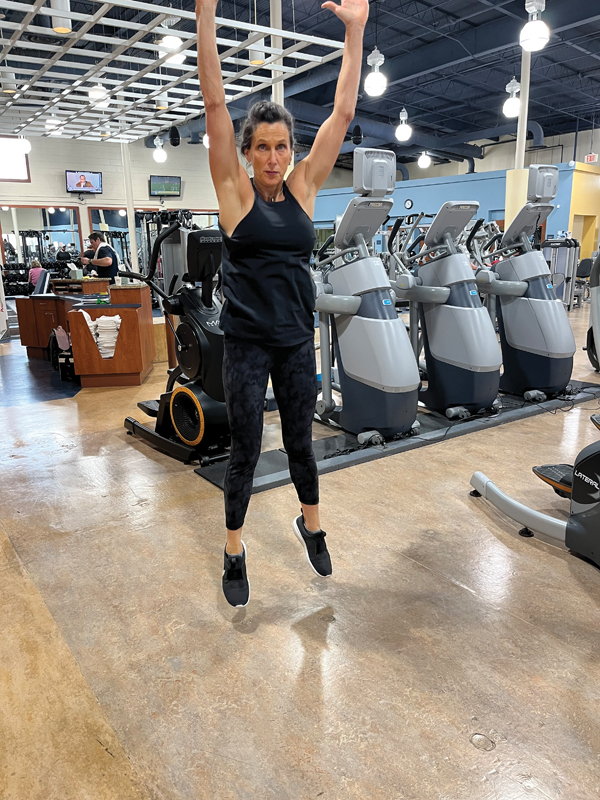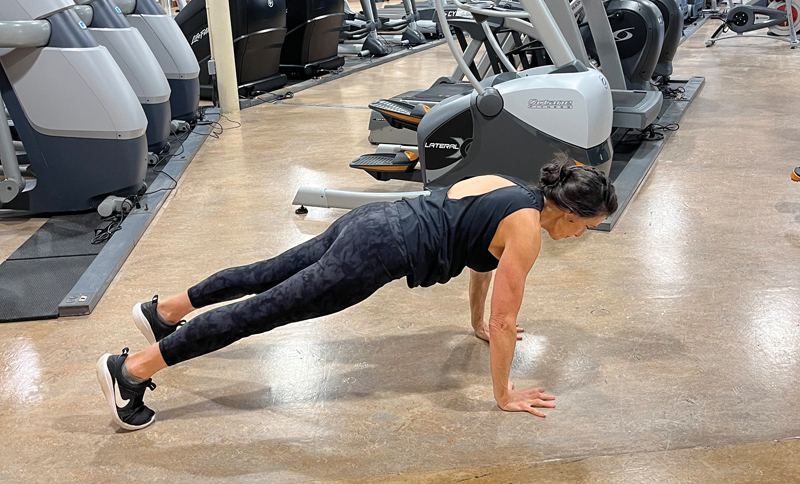Dinghy racers are athletes
To get maximum performance out of yourself and your dinghy sailboat—and to ensure it’s a relatively comfortable and very fun experience—it pays to invest in your fitness. You must develop a fitness routine that best supports the kind of action your one-design boat demands.

Many dinghies thrive on dynamic maneuvers including roll tacks and roll gybes. Success results from sailors springing quickly into action with explosive motions. Building strength and endurance is important—but adding plyometrics into your fitness can help you. It’s a great way to practice getting your muscles to work to their full potential with little or no advance warning. This is because it emphasizes the stretch-shortening cycle: muscle action when active muscle lengthening is immediately followed by active muscle shortening.
Plyometrics are often called “jump training” because so many of the potential exercises involve, well, jumping. They are not the kind of exercise to start with if you don’t already have a solid fitness base! Because they are so dynamic, they can also stress knees and ankles, so steer clear if those are trouble spots for you. As a bonus, many plyometric exercises require no equipment and very little space.
For already fairly fit dinghy athletes, adding a few plyometric exercises into your training sessions can help you rocket up to the new high side through a tack. Be sure to warm up before and cool down after your plyometrics, and absolutely remember to stretch (more on that next month). And add them in and increase your reps gradually.

Plyometric exercises you might want to add into your fitness practice:
Squat jumps: Give yourself the power to get to the high side with these simple but effective moves.
- Set up with your feet slightly wider than your hips, toes straight ahead (or close to it).
- Squat by bending your knees to about a 90-degree angle.
- Jump as high as you can!
- As you land, return to your squatting position.
- Start out with two or three sets of 10 repetitions. Increase from there!
- Want to add extra challenge? Extend your arms overhead as you jump, and/or turn your jump into a tuck jump, bringing your knees close to your chest at the apex of your jump.
Lateral bounds: Also called skater jumps, this exercise helps produce dynamic side-to-side movement—perfect for staying nimble as you balance your dinghy.
- Stand on your left leg, and bend your knee to single-leg squat.
- Jump as high and as far to your right as you can.
- Land only on your right leg, sinking into a squat.
- Jump as high and as far to your left as you can.
- Land only on your left leg, sinking into a squat.
- Start out with two or three sets of 10 repetitions (left + right = one repetition)
Burpees: Whether you love ‘em or hate ‘em, they’re good for you! And they build explosive power for your arms, which comes in super handy during mark roundings/spinnaker sets and the like.
- Stand with your feet roughly hip width, and squat low.
- Put your hands on the ground, roughly shoulder width, and jump your feet back into a plank position.
- Do one standard pushup, returning to plank position.
- Jump your feet forward so they’re right behind your hands, still on the floor—so you’re like a frog.
- From that position, jump as high as you can, lifting your arms overhead.
- Land back into a squat position.
By Kim Couranz
About the Author: SpinSheet Small Boat Scene columnist for more than a dozen years, Kim Couranz has earned several national and world titles in Laser Radials (ILCA 6) and Snipes. She has also raced J/22s, J/24s, and Ynglings on an international level.




